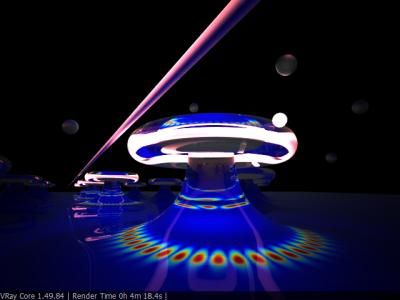Penn Engineers Create Carbon Nanopipettes That Are Smaller Than Cells and Measure Electric Current
17-Jan-2008
University of Pennsylvania engineers and physicians have developed a carbon nanopipette thousands of times thinner than a human hair that measures electric current and delivers fluids into cells. Researchers developed this tiny carbon-based tool to probe cells with minimal intrusion and inject fluids without damaging or inhibiting cell growth.
glass micropipettes are found in almost every cell laboratory in the world but are fragile at small scales, can cause irreparable cell damage and cannot be used as injectors and electrodes simultaneously. Haim Bau, a professor in the Department of Mechanical Engineering and Applied Mechanics at Penn, and his team developed tiny carbon-based pipettes that can be mass-produced to eliminate the problems associated with glass micropipettes. Although they range in size from a few tens to a few hundred nanometers, they are far stronger and more flexible than traditional glass micropipettes. If the tip of a carbon nanopipette, or CNP, is pressed against a surface, the carbon tip bends and flexes, then recovers its initial shape. They are rigid enough to penetrate muscle cells, carcinoma cells and neurons.
Researchers believe the pipettes will be useful for concurrently measuring electrical signals of cells during fluid injection. In addition, the pipettes are transparent to X rays and electrons, making them useful when imaging even at the molecular level. Adding a functionalized protein to the pipette creates a nanoscale biosensor that can detect the presence of proteins.
"Penn's Micro-Nano Fluidics Laboratory now mass-produces these pipettes and uses them to inject reagents into cells without damaging the cells," Bau said. "We are ultimately interested in developing nanosurgery tools to monitor cellular processes and control or alter cellular functions. We feel CNPs will help scientists gain a better understanding of how a cell functions and help develop new drugs and therapeutics."
Original publication: Michael Schrlau et al.; "Carbon Nanopipettes for Cell Probes and Intracellular Injection"; nanotechnology 2008.
Most read news
Other news from the department science

Get the analytics and lab tech industry in your inbox
From now on, don't miss a thing: Our newsletter for analytics and lab technology brings you up to date every Tuesday. The latest industry news, product highlights and innovations - compact and easy to understand in your inbox. Researched by us so you don't have to.






















































